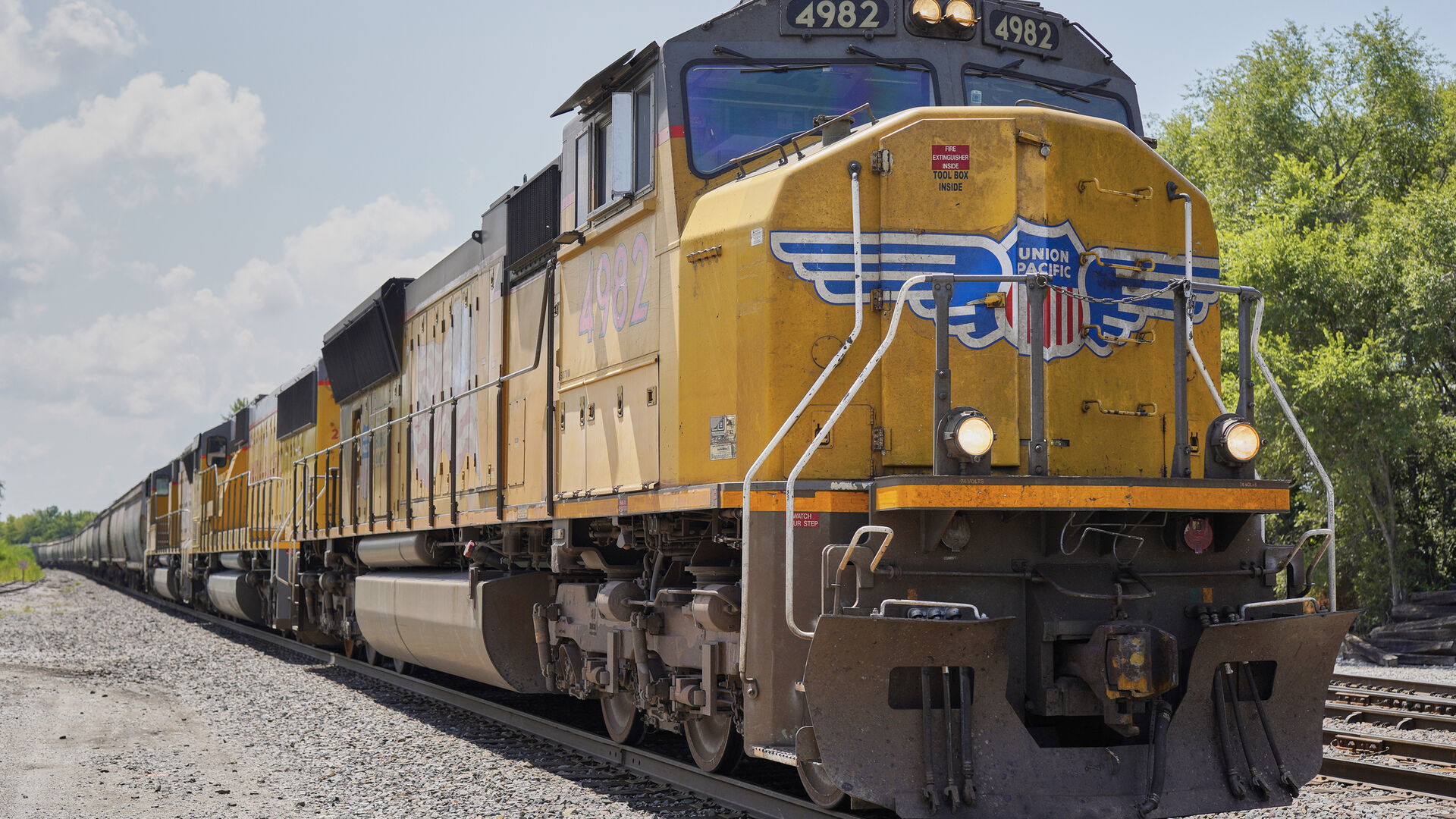
30 tons of explosive chemicals disappear from train, raising rail safety concerns
May 22, 2023
By Karah Rucker (Reporter/Producer ), Jack Aylmer (Editor/Digital Producer)
Media Landscape
This story is a Media Miss by the right as only 33% of the coverage is from right leaning media.
Learn more about this dataLeft 67%
Center 0%
Right 33%
Bias Distribution
Far
Left
+0
Click to close
Left
+0
Click to close
A 30-ton shipment of explosive chemicals traveling from Wyoming to California by rail disappeared en route, officials say
Click to see story on Business Insider
60,000 Pounds of Explosive Chemical Lost During Rail Trip From Wyoming to California, Officials Say
Click to see story on NBC News
Click to close
Center
+0
Click to close
Lean
Right
+0
Click to close
Right
+0
Click to close
4 other sources covering this story
Total News Sources
4
Leaning Left
2
Center
0
Leaning Right
1
Last Updated
11 months ago
A train carrying over 60,000 pounds of an explosive chemical mysteriously arrived empty in California two weeks after departing from Wyoming, sparking concerns about the security and safety of rail transportation. The missing cargo comprised of ammonium nitrate, a substance commonly used as fertilizer but also known as a key component in explosives that have been used in various high-profile bombings in the past.
According to Union Pacific, the rail company responsible for transporting the chemical, its investigation indicates that “criminal or malicious activity” is unlikely the cause. A representative from the Federal Railroad Administration stated that the leak may have occurred due to one of the train car’s gates not being properly closed during the thousand-mile journey, causing the chemical to seep through the rail car. The California Public Utilities Commission is also looking into the matter.
Dyno Nobel, the explosives company in charge of shipping the ammonium nitrate, affirmed that the railcar was sealed when it left Wyoming, and the seals were still intact upon arrival in California. However, it is suspected that a leak may have developed in the bottom gate of the rail car during transit.
“The railcar was sealed when it left the Cheyenne facility, and the seals were still intact when it arrived in Saltdale. The initial assessment is that a leak through the bottom gate on the railcar may have developed in transit,” said a representative for Dyno Nobel, adding that their company had “limited control” over the railcar as Union Pacific transported the cargo.
Dyno Nobel has said it is taking “this matter seriously and will work to understand how it happened and how it can be prevented from occurring again.” Union Pacific officials emphasized that if the ammonium nitrate gradually spilled out onto the ground, it would not pose harm to the soil as it is commonly used in fertilizer.
“The fertilizer is designed for ground application and quick soil absorption. If the loss resulted from a railcar leak over the course of transportation from origin to destination, the release should pose no risk to public health or the environment,” Union Pacific spokesperson Kristen South said.
This incident marks another major mishap in the rail industry, further raising concerns about the overall safety and reliability of train transportation.
In February, a train carrying hazardous materials derailed in East Palestine, Ohio, bringing the safety of the transportation sector into question. Subsequently, several other high-profile derailments across the United States garnered significant media attention, prompting Congress to hold hearings on rail safety and accountability for avoidable mistakes.
Meanwhile, multiple ongoing investigations are currently underway to determine how the ammonium nitrate vanished from the train in this latest incident. The chemical has been the catalyst for numerous explosions in the past that have claimed hundreds of lives.
The 1995 Oklahoma City bombing, carried out by domestic terrorists, claimed the lives of 168 people. The perpetrators used ammonium nitrate to construct a bomb that detonated inside a truck parked in front of the Murrah Federal Building. In 1947, a cargo ship docked in Texas exploded, causing 2,000 tons of the chemical to detonate and resulting in the deaths of 581 people.
More recently, in 2020, Beirut, Lebanon, experienced a catastrophic explosion when 2,700 tons of ammonium nitrate detonated, claiming the lives of over 200 individuals.
“Ammonium nitrate is certainly a well-known disaster risk,” Fred Millar, an independent chemical disaster expert, said.
Media Landscape
This story is a Media Miss by the right as only 33% of the coverage is from right leaning media.
Learn more about this dataLeft 67%
Center 0%
Right 33%
Bias Distribution
Far
Left
+0
Click to close
Left
+0
Click to close
A 30-ton shipment of explosive chemicals traveling from Wyoming to California by rail disappeared en route, officials say
Click to see story on Business Insider
60,000 Pounds of Explosive Chemical Lost During Rail Trip From Wyoming to California, Officials Say
Click to see story on NBC News
Click to close
Center
+0
Click to close
Lean
Right
+0
Click to close
Right
+0
Click to close
4 other sources covering this story
Total News Sources
4
Leaning Left
2
Center
0
Leaning Right
1
Last Updated
11 months ago
Unbiased news.
Directly to
your inbox.
Free!
MOST POPULAR
-
 Getty Images
Getty Images
Harvey Weinstein’s rape conviction overturned, victims could see new trial
Watch 2:13
Thursday
-
 Al-Qassam Brigades
Al-Qassam Brigades
Hamas video shows American hostage with arm amputated
Watch 2:35
Thursday
-
 Getty Images
Getty Images
Pythons decimate Florida’s wildlife, is eating them the answer?
Watch 2:04
Tuesday
-
 Getty Images
Getty Images
Trump could lose Secret Service protection if found guilty
Watch 2:10
Tuesday
